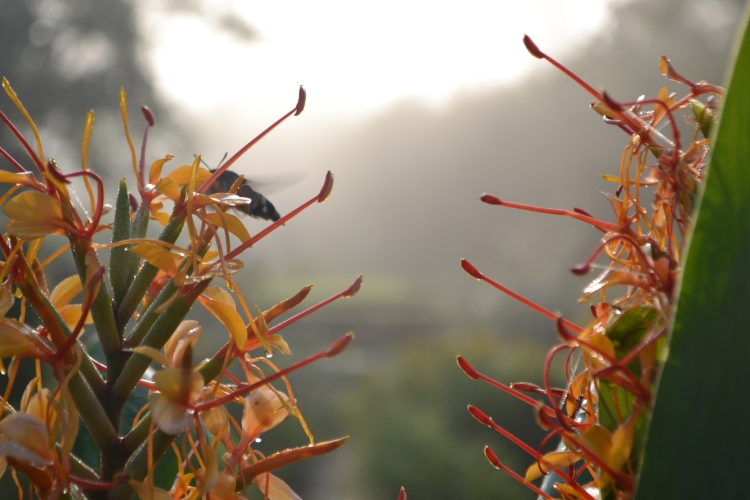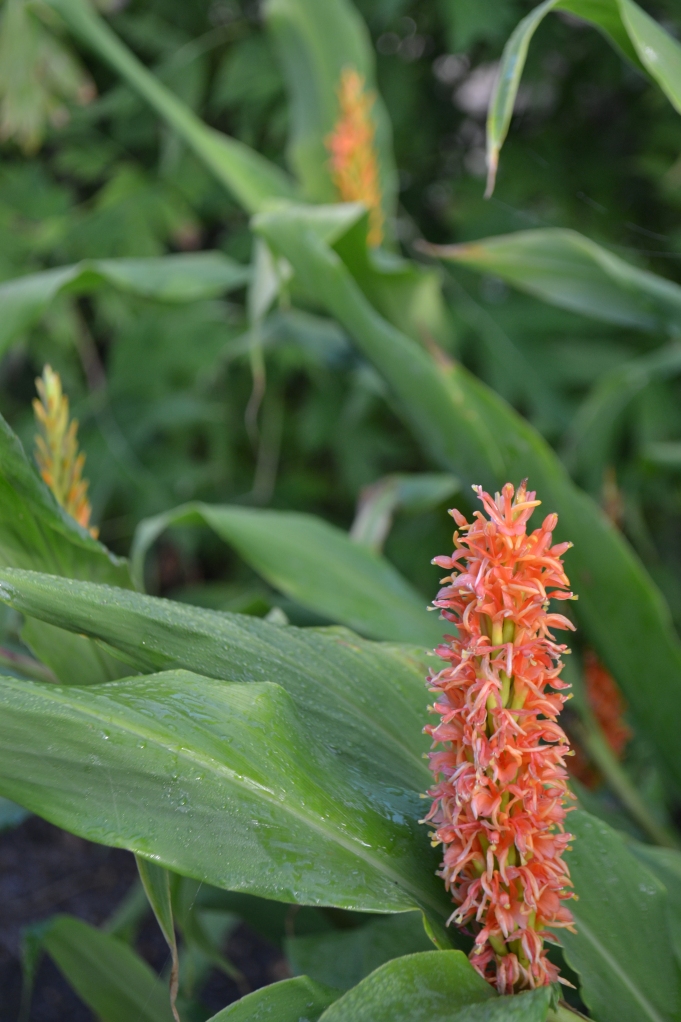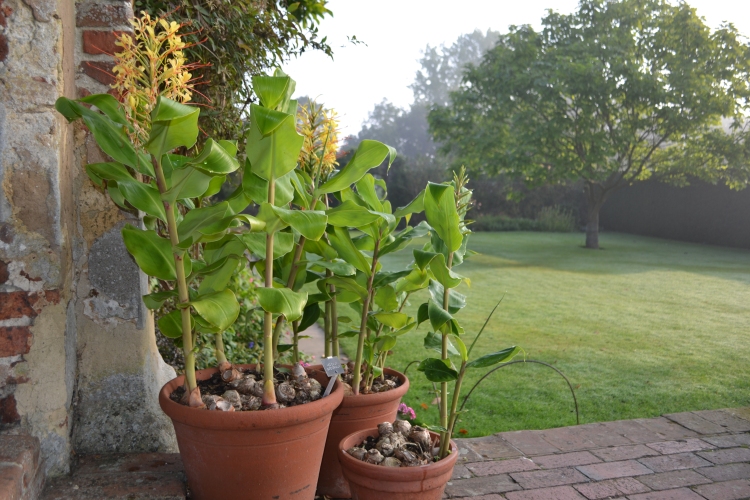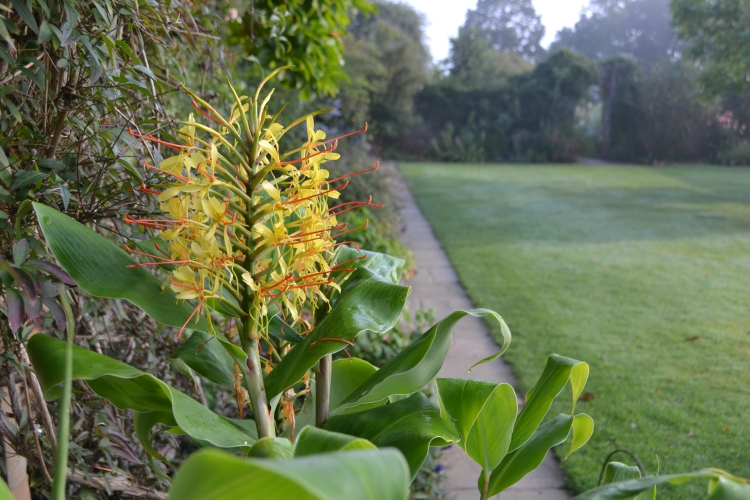Early September is a beautiful time to visit the garden. Golden light flatters the foliage and flowers. The atmosphere seems even more antiquated in the early autumn air. Yet, the midday sun still feels hot and is greatly enjoyed by people and flowers alike.
Some of my absolute favourite plants to see at Sissinghurst are the ‘Ginger lilies,’ also commonly called the ‘Kahili Ginger,’ or ‘Garland lily’ to name but a few. Interestingly, Cuba hails the ‘White Ginger Lily’, Hedychium coronarium as their national flower.
The German botanist and physician Dr. Johann Konig discovered the plants on his travels to India during the 1700’s and wrote much about medicinal plants found in Indian medicine. In time, ‘Ginger lilies’ became very popular in Victorian gardening, when the taste for collecting and displaying exotic plants exploded.
The botanical name for this large group of rhizomatous perennials is ‘Hedychium’ and derives from the Greek word for sweet, hedys and chion, meaning snow. They belong to the ginger, or Zingiberaceae family, of which there are about 40 to 70 species. Unsuprisingly, they originate from Asian lands, but also grow in the cooler climates of the Himalayas and Bhutan. Some species require winter protection, although there are many which will withstand our British climate.
Their appeal for me is their amazingly complex flower spike. The foliage is bold and some species grow to head height without the need for additional staking, which is a real bonus. It also places the flower heads at a perfect height to enjoy both the intricate petals and the sweet spicy scent.
There are three species growing in the garden. H. spectatum.var.acumatum, H. densiflorum and H. coccineum ‘Tara,’ (AGM) which I think is the most striking group in the garden. You will find it in the cottage garden, along with H. densiflorum too. Over the years I have worked here, it has coped with all kinds of unpredictable winter weather and has never faltered. If anything it has thrived.
My favourite species, H. gardnerianum, (AGM) is far less hardy and requires protection from frost in winter. Due to this, we grow several clumps in pots in the greenhouse and bring them out into the garden at the opportune moment. Their stout rhizomes quite like being pot bound and will sit happily in containers for a while. They are fed and watered during the growing months until they have finished flowering and once the foliage is starting to tire they are cut right down and watering is reduce to a bare minimum. They appear to be free from most pests, but can become home to difficult garden weeds like oxalis, which like the snug spaces between the thick rhizomes.
Apart from this, I highly recommend them and intend to grow some of my own.
Jo











Hi Jo What a brilliant blog, really interesting, your knowledge always amazes me. Well done Regards Eric
LikeLike
Morning Eric, thank you for reading the blog. It gives us, the gardeners, a good opportunity to share some of Sissinghurst from our own perspective.
LikeLike
I absolutely love your photographs, with their misty, dewy backgrounds and fiery foregrounds. How special, even if you are working, to be out in the garden so early when all is fresh and bright. Beautiful post.
LikeLike
Hello, glad you liked them. The 1st photograph also has a humming bird hawk moth collecting nectar from the flower on the left hand side, if you look closely.
LikeLiked by 1 person
Beautiful Jo, I need to get some for my garden. Hope to see you soon. Love Jane xx
LikeLike
Hi Jane, thanks for reading! Yes, get some for your garden.
Jo
LikeLike
I am pleased you found it helpful. Thank you for following.
Jo
LikeLike
Pingback: A Garden Review of 2014 | SISSINGHURST GARDEN